Elbow Replacement Surgery
What is Elbow Replacement Treatment?
If a disease such as rheumatoid arthritis or injury damages your elbow, your doctor may recommend surgery to replace your joints so you can reduce pain and move better. Two implants are attached to the arm bones. Metal and plastic hinges connect the implants. You need an experienced surgeon. Consult your rheumatologist or another doctor. You can also consult Dr Abhijit Agashe who provides Elbow Replacement Treatment in Pune with 13 years of experience as an Orthopedist.

What is the surgical procedure for Elbow Replacement?
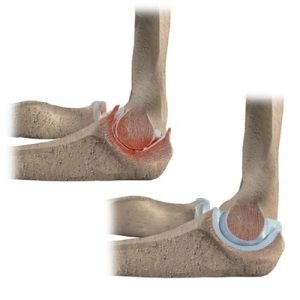
Your surgeon will make an incision, usually at the back of the elbow to reach the elbow joint. After making the incision, your surgeon will gently move the muscle to one side to get close to the bone. After removing the scar tissue and bone spurs around the joint, your surgeon will prepare the humerus to accommodate the metal piece on one side of the joint that will be replaced. The same preparation was made for the ulna.
The replacement stem is placed in the bones of the humerus and ulna and fixed with bone cement. After the wound is closed a soft padded bandage is placed to protect the incision as the wound heals.
Some surgeons place a temporary tube in the joint to drain the surgical fluid. In the first few days after the operation, the tube can be easily removed in the ward.
Implants – The metal replacement parts are made of cobalt-chromium alloy or titanium alloy and coated with polyethene (plastic). The bone cement is made of polymethylmethacrylate (acrylic acid, a plastic).
What to do before the operation?
Your doctor will ask about your medical history. Tell them about any of your medical conditions, including allergies. Also, tell your doctor if you drink alcohol and what medications you take. If you smoke, you must stop smoking before the operation.
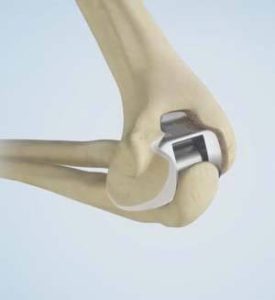
What Causes Elbow Pain?
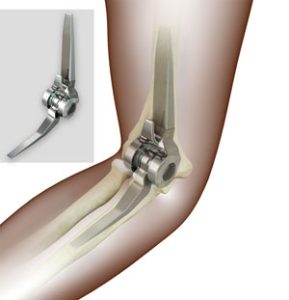
Various conditions can cause elbow pain and disability, leading patients and their doctors to consider elbow replacement surgery.
- Rheumatoid Arthritis – This is a disease in which the synovial membrane surrounding the joints swells and thickens. This chronic inflammation damages the cartilage and ultimately leads to cartilage loss, pain, and stiffness. Rheumatoid arthritis is the most common form of a group of diseases called inflammatory arthritis.
- Osteoarthritis (Degenerative Joint Disease) – Osteoarthritis is age-related & wear and tear & arthritis. It usually occurs in people 50 years and older, but it can also occur in young people.
- Post-traumatic Arthritis – This type of arthritis may appear after a serious injury to the elbow. Over time, fractures of the bones that make up the elbow or tears of the surrounding tendons and ligaments can damage the articular cartilage. This can cause pain and limit the function of the elbow.
- Severe fractures – Severe fractures of one or more of the bones that make up the elbow are another common cause of elbow replacement surgery. If the elbow breaks, it will be difficult for the doctor to put the bone block back in place. In addition, the blood supply to bone fragments can be cut off. In these types of situations, the surgeon may recommend elbow replacement. Elderly patients with osteoporosis (brittle bones) have an increased risk of severe elbow fractures. In addition, some fractures do not heal well, and the elbow may need to be replaced to treat persistent problems.
- Instability – Instability of the elbow joint is the relaxation of the elbow joint, which can cause the joint to hook, pop out or slip out of its original position during certain arm movements. It most often occurs as a result of an injury, usually a dislocated elbow. This type of injury can damage and stabilize the bones and ligaments around the elbow joint.
What are the risks?
The most common complications are:
- Infections
- Nerve and blood vessel damage
- Allergic reactions to artificial joints
- Fractures Stiff or unstable joints
- Weakness or failure of arm tendons
- Pain
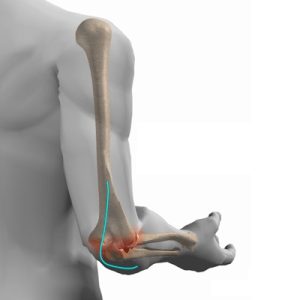
What can you expect?
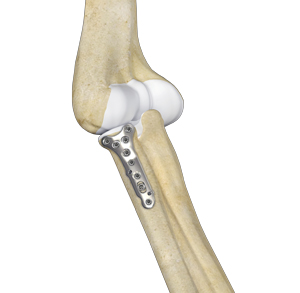
An elbow replacement surgery takes about 2 hours. You will receive anaesthesia, so you will not be awake because of it. You will need to stay in the hospital for some period of time.
After the operation, sutures and bandages will be placed on your new elbow. You may also need to fix your arm on the splint to keep it stable as it heals.
Because elbow replacement involves cutting through the skin, tendons, and bones, you will need strong painkillers after the operation. You will also take pain medicine for 1 to 2 weeks after you leave the hospital.
It takes time to adjust to the new elbow. For example, you will not be able to lift anything heavier than a cup of coffee for 6 weeks after surgery. It is a good idea to arrange help in advance.
Why Choose Dr. Abhijit S. Agashe ?
Dr Abhijit S. Agashe is the Best Knee Replacement Surgeon in Pune who performs the surgery using all the advanced technology which gives the best result. He is the most experienced orthopedic surgeon in Pune
Agashe Clinic
- Research Award by Bone and Joint Decade – 2004
- Esteemed Fellowship Offered By The AO Group From Switzerland – 2008
- Fellowship With Prof. Willium Peterson From Germany In Sports Medicine – 2007
Address
- Office no 206, Siddharth Towers Building no 1 Near Karishma society, Kothrud, Pune, Maharashtra 411029
- 086006 53737
- [email protected]



